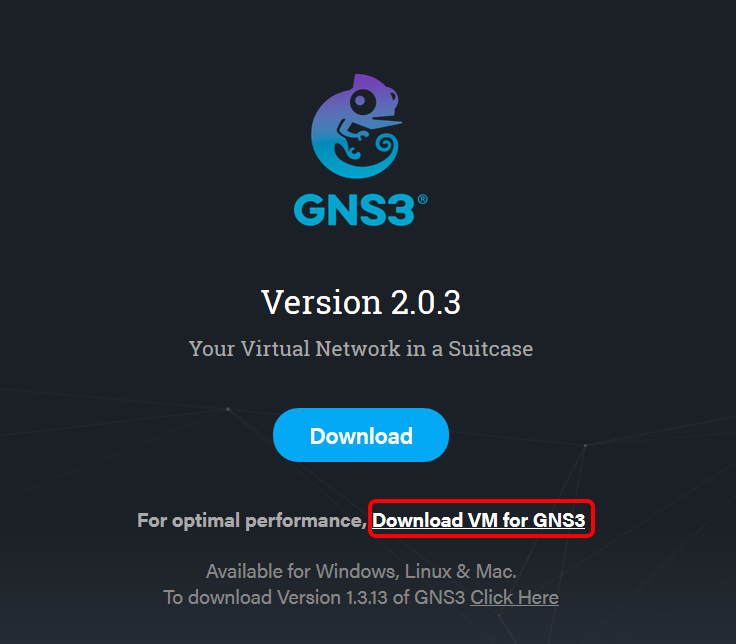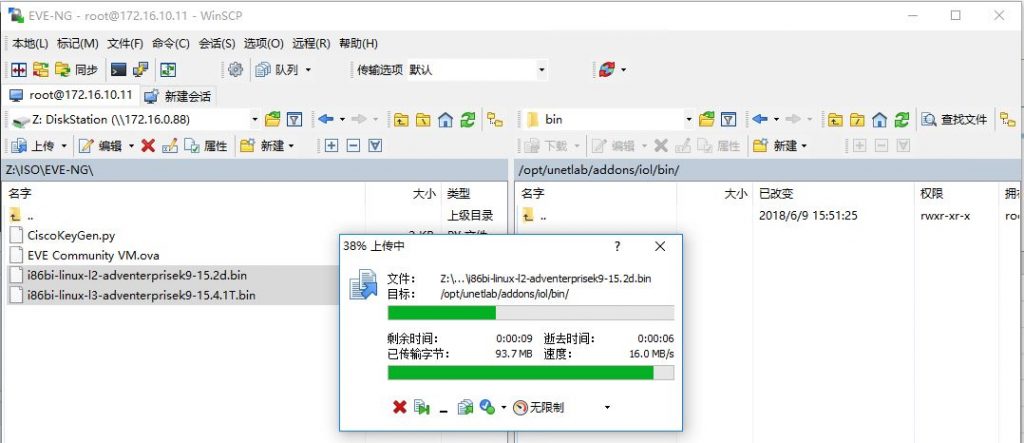- Cisco Iou Keygen Python File
- Cisco Iou L3
- Cisco Iou Keygen Python Free
- Cisco Iou Keygen Python Installer
- Cisco Iou Keygen Python Version
Cisco IOU License Generator – Kal 2011, python port of 2006 C version hostid=007f0101, hostname=jonathanm, ioukey=7f04c1. Add the following text to /.iourc: license jonathanm = 0a241c5e597c7b21; You can disable the phone home feature with something like: echo ‘127.0.0.127 xml.cisco.com’ /etc/hosts. Jonathanm@jonathanm:$ cat.
How To Upgrade CISCO Router IOS via TFTP Local Server!(Cisco 4000 Series Integrated Services Router) Connect Windows PC to Router IN GNS3 (Telnet) How To Configure SSH Version 2 Algorithm-Type SHA-256 on CISCO 4000, 1000, 800 Series Integrated Services Routers) Configuring DHCP on Router(CISCO Packet Tracer) How to Install GNS3 IOU Images L2&L3. Print 'Cisco IOU License Generator - Kal 2011, python port of 2006 C version'. Generate Cisco IOURC license key on GNS3 VM using Python 3 Upload Keygen to IOU VM Either have to download the KeyGen.py or take it from the zip file itself and upload it to the VM. Welcome to this Python hands-on course for learning Network Automation and Programmability with Python in a Cisco or Multivendor Environment, taught by a DevOps Engineer and Professional Trainer. Boost your Python Network Programming Skills by learning one of the hottest topics in the Networking Industry in 2021 and become one of the best.
| #! /usr/bin/python |
| print'n*********************************************************************' |
| print'Cisco IOU License Generator - Kal 2011, python port of 2006 C version' |
| importos |
| importsocket |
| importhashlib |
| importstruct |
| # get the host id and host name to calculate the hostkey |
| hostid=os.popen('hostid').read().strip() |
| hostname=socket.gethostname() |
| ioukey=int(hostid,16) |
| forxinhostname: |
| ioukey=ioukey+ord(x) |
| print'hostid='+hostid+', hostname='+hostname+', ioukey='+hex(ioukey)[2:] |
| # create the license using md5sum |
| iouPad1='x4Bx58x21x81x56x7Bx0DxF3x21x43x9Bx7ExACx1DxE6x8A' |
| iouPad2='x80'+39*'0' |
| md5input=iouPad1+iouPad2+struct.pack('!L', ioukey) +iouPad1 |
| iouLicense=hashlib.md5(md5input).hexdigest()[:16] |
| # add license info to $HOME/.iourc |
| print'n*********************************************************************' |
| print'Create the license file $HOME/.iourc with this command:' |
| print' echo -e '[license]n'+hostname+' = '+iouLicense+';'+' | tee $HOME/.iourc ' |
| print'nThe command adds the following text to $HOME/.iourc:' |
| print'[license]n'+hostname+' = '+iouLicense+';' |
| # disable phone home feature |
| print'n*********************************************************************' |
| print'Disable the phone home feature with this command:' |
| print' grep -q -F '127.0.0.1 xml.cisco.com' /etc/hosts || echo '127.0.0.1 xml.cisco.com' | sudo tee -a /etc/hosts' |
| print'nThe command adds the following text to /etc/hosts:' |
| print'127.0.0.1 xml.cisco.com' |
| print'n*********************************************************************' |
This is a reblog from the original article at Connect IOU with real networks or dynamips
From Internetworkpro
This guide provides explanations to a script called iou2net.pl (script is at the end of the article), which allows you to attach IOU instances to real network (interfaces). In its functionality, its similar to what the ioulive tool does. For more information about IOU or ioulive, ask your Cisco SE/AM that provided you with your copy of IOU, or check out the [IOU FAQ from evilrouters.net][3].

Why another script that does nearly the same thing as ioulive? While playing around with IOU, i tried to come up with a way to attach IOU instances to dynamips directly. I managed to get this working for single instances, but came to the conclusion that its best to integrate such functionality in dynagen directly. Unfortunately, Im not a good programmer and have no experience with python, nor the time to dig through the dynagen sources and extend the code. This script is a byproduct of this work, where i tried to document the packet format that IOU uses to communicate between instances.

Installation
The program is written in perl and can be copied directly from the source listing (end of the article) to a file. Make the file executeable with
Dependencies
iou2net depends on some perl modules. Most of them should come with your default perl distribution. Best case, the extra installation of Net::Pcap should do the trick to satisfy dependencies. On Ubuntu and Debian systems, this is provided with the “libnet-pcap-perl” package. Of course, beside the perl package, you need libpcap too (not sure if -dev is required).
For systems that dont pack the perl module, use CPAN to install it:
Now try to start the script, it should start without any module warnings, printing the help screen:
Usage

iou2net will forward frames between a IOU instance and a (real) network adapter. IOU needs a special mapping in its NETMAP file. The interface of the IOU instance you want to forward from has to be listed as a source entry, with a “@” suffix at the end. The destination of the mapping will be a pseudo IOU instance number, with a pseudo interface number. iou2net.pl will use this pseudo IOU instance ID to connect to the real IOU instance, and do its frame relaying.
Example NETMAP file:
The first two mappings are normal connections between IOU instances at the same host (R10, 1/1 R11, 1/0 and R10, 1/2 R12, 1/0). The last one connects interface 1/0 of R10 to pseudo router (instance) 20, interface 0/0.
You can choose any ID (<1024), as long as its not used by any real IOU instance. Specify this ID with the option “-p” when launching the script. Dont use this arbitrary ID for anything else in your mappings/topology. iou2net will need to read through this NETMAP file, to determine the correct mapping. By default, it looks in the current directory for the file NETMAP. If you want to use a file in a different directory (and/or with a different name), use the “-n” option. Last, you must specify the network interface where the frames should be forwarded to/received from. iou2net.pl will put this interface into promiscuous mode, therefore you must have superuser privileges when starting the script.
Limitations
- This is only tested with Linux so far. Im sure it will run at other modern Unices, too. From perl perspective, porting this to windows is a possible, yet a pointless approach, because there is no IO_W_ (afaik).
- For the NETMAP mapping line that is related with iou2net.pl pseudo ID, you must use id:x/y interface notation and not the “compressed” id:z format. Its just a matter of implementation in the script, im too lazy to add this.
- There is not much sanity checking. The last occurence of a line that contains the pseudo ID as a destination is used, no matter how many other mappings with this ID exist before in the NETMAP file. These are typos anyway (see next limitation).
- A single instance of this script will handle one IOU < -> network mapping. If you, for example, have multiple NICs in your systems and therefore want multiple IOU interfaces to be forwarded, you must launch multiple instances of the script. Every mapping must get a unique pseudo ID as the destination, and every instance of the script must be started by adding this unique ID. Example: $ cat NETMAP 10:1/[email protected] 20:0/[email protected] 10:1/[email protected] 21:0/[email protected] 11:1/[email protected] 22:0/[email protected] […]$ sudo ./iou2net.pl -i eth0 -p 20 & […] $ sudo ./iou2net.pl -i eth1 -p 21 & […] $ sudo ./iou2net.pl -i eth2 -p 22 & […]
I didnt test this approach, but it should work. Also, i didnt test the behavior of bridging multiple instances of this script to the same physical interface – please provide feedback.
Run all your IOU instances as the same user, otherwise you end up with different “netio” subdirectories in /tmp, and your IOU instances cannot talk to each other. The script needs to know the real uid of the user, therefore you should invoke iou2net.pl with sudo, from the same user that runs the IOU instances.
What works
I’ve done some quick tests with a local IOU instance, one Ethernet interface bridged to a real network where a c1841 is located:
- Basic communication at layer 2 and 3 (Ethernet), up to MTU of 1500
- OSPF adjacency over Broadcast segment (multicast)
- ISIS adjacency
- LDP adjacency
- MPLS encapsulation over Ethernet (@1500 byte [MPLS] MTU, no baby giant/jumbo frame support)
- IPv6 auto discovery
- various connectivity tests toward v4 and v6 Internet
- attaching IOU to dynamips (see below)
IOU communication
In this cha pter, i will outline the packet format and methods IOU uses when communicating outside of an IOU instance. Inter-instance communication is done through UNIX domain sockets. These are created in the subdirectory “/tmp/netio1000”, with a numeric name that corresponds to . So far, i cannot tell whether this directory is the same for anyone, anytime. You can sniff this traffic with strace, like
When sending frames, IOU will submit the entire L2 frame, prepended with a IOU proprietary header. This header is required at the receiving instance, to make the distinction to which local interface the frame is destined to. This is important, because the sockets are per instance (router) and have no way to decide to which internal interface to forward to (whithout extra logic that looks at MAC addresses etc.).
Cisco Iou Keygen Python File
Furthermore, IOU does sanity checks with this header. When receiving a frame, the source information (sending ID, sending interface) is checked against the mappings that were read from the NETMAP file. It is not possible to send frames to an instance with valid destination ID and interface numbers and faked/unknown source information; the source ID and interface numbers have to match also.
The header format is described in the script. I cannot say if the last two bytes are really a delimiter that is always 0x01000, or if these fields serve a different purpose.

Cisco Iou L3
The script walks through the NETMAP file and determines the correct mapping, extracts the source IOU instance ID and its interface numbers. As discussed above, this is important for constructing the IOU header. Then it creates a socket $iou_pseudo_sock for out IOU pseudo ID (the destination), the real IOU instance (the source) will send its frames to this socket. This socket will be read- and writeable by anyone, since this script runs as root, where you usually run IOU as a normal user. Furthermore, we bind to the socket of the source IOU instance
($iou_router_sock). The IOU header that is used when sending frames to the real IOU instance is now prebuild, all the required information is available. Next, we bind to the NIC through PCAP routines.
The receiver that handles the traffic direction “IOU->real network” is forked to allow for non-blocking functionality (There is an option to IO::Socket::UNIX, allowing the socket to operate in nonblocking mode, but i found this way more intuitive). For every frame that the source IOU instance sends, we strip off the first 8 bytes (the IOU header), and transmit the frame via the real NIC.
Cisco Iou Keygen Python Free
The receiver that handles the direction “real network->IOU” is implemented with a pcap capture loop, where the “logic” is inside the sub recv_loop. Every received frame will be prepended with the precompiled IOU header and send to the socket of the source IOU instance.
This is a reblog from the original article at Connect IOU with real networks or dynamips and probably worth checking there first for any updates.
Cisco Iou Keygen Python Installer
Other Posts in This Series
Cisco Iou Keygen Python Version
- Cisco IOU:Connect IOU with real or external networks (17th April 2011)
- Cisco IOU:Scripted Start Multiple Routing with L2IOU, memory (15th April 2011)
- Cisco IOU: What can Cisco do for Testing, Validation & the IPv6 challenge ? (15th April 2011)
- Cisco IOU: Starting Multiple Routers (15th April 2011)
- Cisco IOU: Shutting down the IOU Processes (15th April 2011)